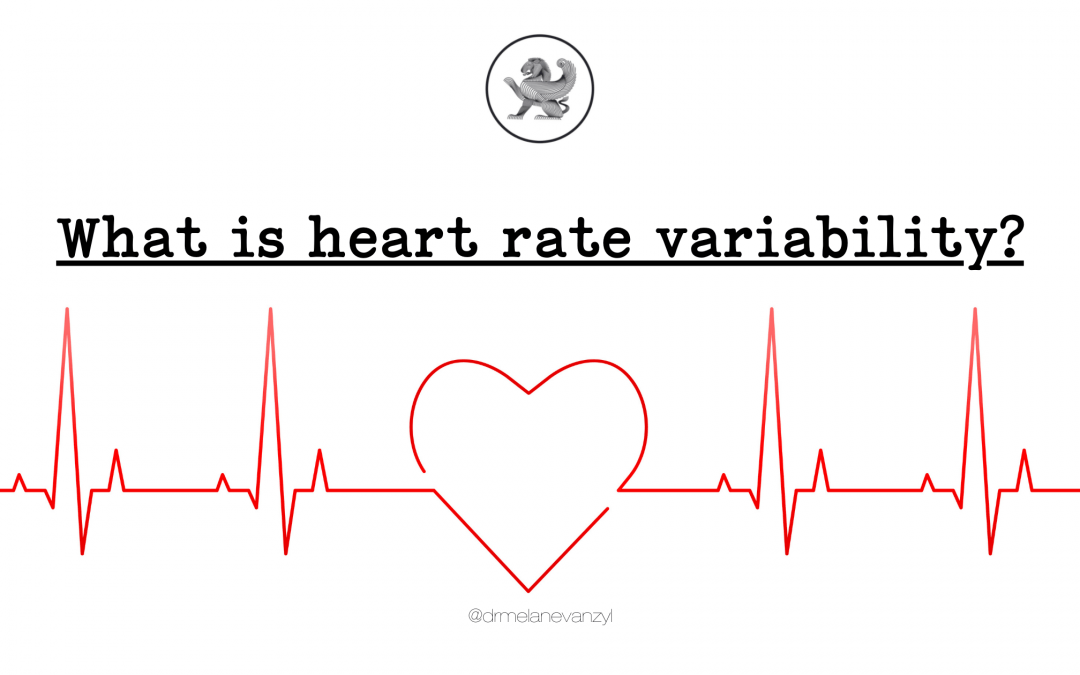CREDITS
Psychology Today
What is heart rate variability?
Heart rate variability (HRV) is a physiological marker of how we experience and regulate our emotions. But before we discuss HRV and emotion regulation in greater detail, let’s take a quick biology refresher. Whenever we are confronted with potential dangers (e.g., walking alone at night, being chased by a rabid dog), we enact a fight-or-flight response in which our heart rate (HR) spikes up, our breathing gets shallower, our muscles tense up, and so on. This response, which is essential for survival, is mediated by the sympathetic branch of the nervous system. When we are not enacting such fight-or-flight responses, our bodies are in the process of recovery. We digest, we heal, and we grow. These responses are mediated by the parasympathetic branch.
So what does this mean for the heart? Our HR reflects the number of heart beats that take place in a given minute – by the way, the average resting HR is between 60 and 90. When activity in the sympathetic branch increases, HR goes up. When this activity decreases, HR goes down. Conversely, when parasympathetic activity decreases, HR goes up (because there is less inhibition). When it increases, HR goes down (because there is more inhibition). You can think of the sympathetic branch as the gas pedal and the parasympathetic branch as the brake.
Importantly, having an elevated parasympathetic influence on the HR is associated with greater flexibility when responding to the various demands posed by the environment (e.g., Thayer et al., 2012). This is because the parasympathetic branch acts faster than the sympathetic branch and it can therefore increase and decrease the HR with greater precision. If we return to the gas pedal/brake analogy, let’s imagine that we want our car to maintain a speed of 60 miles per hour. If we primarily use the gas pedal, we will find ourselves under- and over-shooting the speed quite frequently. However, if we “ride the brakes,” we can more easily control the speed: when our car begins to speed up, we gently press on the brakes, and when it begins to slow down, we slowly let go of the brakes.
Now, the extent to which the parasympathetic branch influences the HR is reflected in HRV. Importantly, HRV is relatively easy to measure. Rather than calculating the number of beats per minute (i.e., HR), we measure the number of seconds that elapse between one heart beat and the next one. This is called the interbeat interval, or IBI. So, for example, if someone has an HR of 60 beats per minute, the average time that elapses between each heart beat is 1 second (or 1000 milliseconds). In other words, their average IBI is 1000. However, when we calculate HRV, we don’t care about the average IBI, but rather about its variability. We are interested in how much the IBI fluctuates from each heart beat to the next. Remember that the parasympathetic branch is super fast, so sudden changes in IBI can only be mediated by this branch! Thus, greater HRV equals more parasympathetic influences on the heart, and thus, more flexible emotional responding.
n case you’re wondering about the math behind these calculations, worry not! Fortunately there are a number of commercially available exercise watches that record HR and can calculate HRV for you. Perhaps you already have one of these. Perhaps a friend or family member does. So, if you’re interested in tracking your physiological flexibility, you can buy/borrow one of these watches and do a little test! Have fun!

